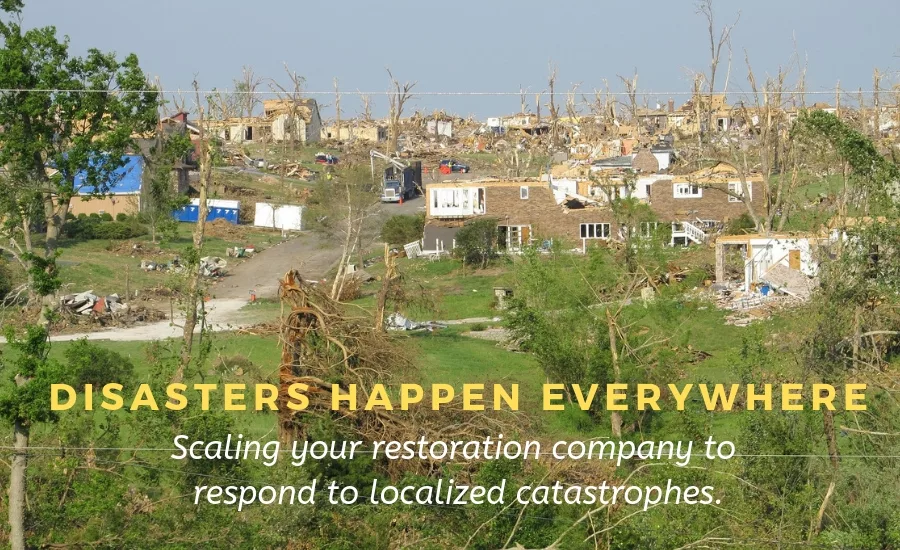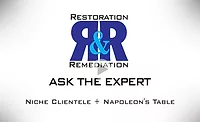Disasters Happen Everywhere
Scaling your restoration company to respond to localized catastrophes.

I think there is a common misconception in the restoration industry that to do catastrophe or “CAT” work, you have to travel. According to Zurich-based reinsurance company, Swiss Re, natural disasters in 2018 worldwide cost $155 billion. Many of those disasters were in the U.S. – the California wildfires and mudslides, Hurricanes Florence and Michael, Hawaii’s volcanic eruption, flooding in Maryland, and others. Disasters happened coast-to-coast, and impacted arguably hundreds of restorers who have never traveled to a catastrophe zone, yet found themselves in ground zero.
Truth be told, traveling is not for everyone! Wise restoration owners know whether or not traveling to catastrophe losses is something they want in their service offerings or not. Tim Hull calls traveling to catastrophes “the great gamble” because they can truly make or break a company. He suggests staying home unless you’re invited to the party, and also reinforces that companies that choose to travel run the risk of missing out on work right in their own backyard for existing and future customers.
Disasters happen everywhere, and can send any restoration company into high gear. While it’s obviously impossible (and unnecessary) for every company to have a CAT team, it is helpful to know how to scale up your restoration company in case there is a sudden influx in business. Here are just a few examples of localized disasters that have left unprepared restoration companies scrambling to help, often overwhelming their resources and staff:
- Tornado outbreaks
- Nor’easter storms (can result in large amounts of snow causing roof damage and leaks, burst pipes, etc.)
- Deep freezes (same damage as Nor’easters)
- Localized flooding (many communities throughout the U.S. experience flooding during the spring thaw or periods of heavy rain)
- Wildfires
- Business fires (instances where a fire in one historic downtown building spreads thru an entire block)
- Mudslides
- Sandstorms
I’m sure you can think of more examples than I just listed. Often, those are all disasters that other companies aren’t traveling to help with; it’s all up to the local companies. In some instances, as was the case for an Oklahoma contractor a few years ago, clients come first. The restoration company’s building was destroyed in a tornado outbreak, so they moved into a trailer as their office for months on end while helping their customers before taking the time to rebuild their own facility.
Even if you don’t travel to catastrophes, here are some things to consider when putting a plan to paper in case disaster strikes your service area:
- Manpower:
- How will you make sure you have enough employees handling the jobs?
- How will you avoid burnout and handle schedules?
- What if an employee is impacted by the disaster?
- Logistics:
- How will you get the equipment you need?
- What if roads are closed or impassable?
- Documentation:
- What is the process for scoping these jobs and deciding which to take and which to reject?
- Who will keep track of all the documentation?
- Are there more documents you’ll need (flood insurance, etc.) than your estimators and project managers normally collect?
- Who is completing the Xactimate estimates?
- Prioritization:
- What happens to jobs already in process when the new disaster happens?
- How will you decide what jobs get tackled first, second, third, etc.?
These are just a few of the things to consider when handling any sort of catastrophe restoration work, big or small. All these topics, and more, will be covered by expert speakers and panelists at R&R’s Preparing to Respond event this July in San Antonio, Texas!
Looking for a reprint of this article?
From high-res PDFs to custom plaques, order your copy today!








